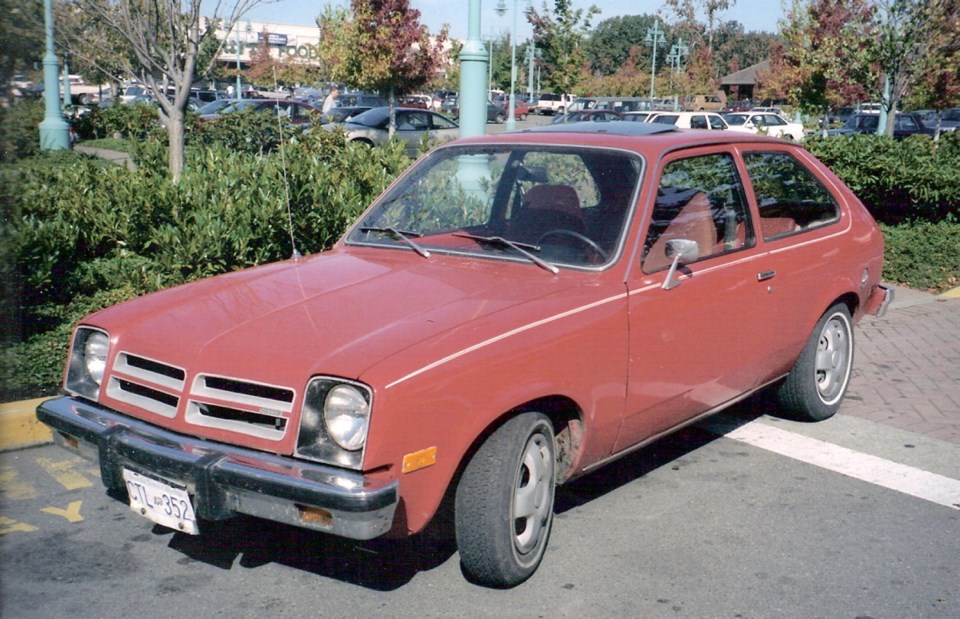The 1970s were turbulent years for the American auto industry. Two energy crises brought tightening fuel economy and emission standards. On top of that was increasing foreign competition from Europe and Japan. General Motors, with its stable of big cars, really felt the crunch as “big cars, big profits” was not playing so well anymore.
General Motors was a little gun-shy about small cars because its two previous attempts had ended badly. In 1960, GM, Ford and Chrysler introduced compact cars to “drive the imports back to their shores.”
GM’s bold Chevrolet Corvair had a rear-mounted, air-cooled, flat-six engine and four-wheel independent suspension. Ford and Chrysler stuck to conventional designs, and the plain Jane Ford Falcon far outsold the more technically daring Corvair.
On top of that, consumer advocate Ralph Nader’s 1965 book Unsafe At Any Speed alleging the Corvair had dangerous handling caused sales to plummet. Production ended in 1969.
GM’s second small car, the 1971 Chevrolet Vega, was promoted as “the little car that does everything well.” It had a front-mounted, 2.3-litre overhead-cam four-cylinder engine featuring a cast-iron head and aluminum block with silicone-hardened cylinder bores.
The Vega was built at a modern, highly automated assembly plant in Lordstown, Ohio, Unfortunately, after only 23,000 1971 Vegas were built, production was halted by an acrimonious strike, killing first-year sales momentum.
In addition to the work stoppage and later assembly problems, there were mechanical troubles. The aluminum cylinders proved prone to premature wear and the engine was rough and noisy. The Vega suffered several recalls before production ended in 1977.
Another reason to go abroad was time. Chevette approval came in December 1973, with the car to be production-ready by the fall of 1975, too soon for an all-new design.
To expedite it, Chevrolet based the Chevette on GM of Germany’s Opel Kadett, which dated back to 1971. It was a sound little car also produced in various forms by GM in Brazil, Isuzu in Japan and GM (Vauxhall) in Britain. Chevrolet engineers worked with their European counterparts to make it safety- and emissions-compliant for the North American market.
The Chevette’s dimensions were close to the Rabbit’s, a benchmark small car of that time. Its 4,044-millimetre length was 86 mm greater than the Rabbit’s, and the wheelbase was virtually identical at 2,398 mm versus 2,400 mm. It was 48 mm narrower and 81 mm lower.
The Chevette’s cast-iron inline, belt-driven single overhead camshaft four came in standard 52-horsepower 1.4-litre and optional 60-horsepower 1.6-litre versions. It drove the rear wheels through a four-speed manual or optional three-speed automatic transmission.
Its 953-kilogram weight was about 68 kg more than the Rabbit’s, and its 60 horsepower was 10 less than the VW’s 1.5-litre, making the Chevette slower. In February 1976, Road & Track reported zero to 97 km/h in 16.9 seconds for the manual 1.6-litre Chevette, versus the Rabbit’s 12.7.
The unit-construction Chevette came as a two-door hatchback only, but with five trim levels, from the price leader Scooter (with no rear seat) to the vinyl “wood-grain” exterior Woody Coupe.
Suspension was independent via front A-arms and coil springs rather than the MacPherson struts common in small cars. It had a beam axle and coils in the rear. Car and Driver found the Chevette’s handling a strong feature.
The Chevette was introduced in the fall of 1975 with Chevrolet officials confidently predicting 275,000 1976 sales, including 135,000 to 150,000 “conquest” sales from imports. But car buyers were already forgetting the 1973 energy crisis and reverting to large cars. Chevette sales failed to reach the predicted level by the spring of 1976, so production was slashed by about half.
Chevrolet persisted, refining and improving its subcompact over the years. It dropped the 1.4-litre engine at the end of 1977, upped available horsepower to 68 and added a four-door, long-wheelbase model. Sales were satisfactory, if not outstanding, until the second energy crisis in1979 stimulated small cars and sales took off.
A diesel engine was added, and in spite of GM’s new front-drive 1980 X-cars (Chevrolet Citation, et al.) arriving in mid-1979, Chevette sales held strong right into 1982.
It was eventually acknowledged, however, that the superior space efficiency of front-drive was the small-car future. The march of technology had caught up with the Chevette, and production of it and its Pontiac sibling ended in December 1986.



